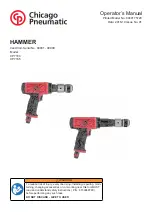
Safety and Usage of High Voltage Power Supply 1
Air insulation
Liquid insulation
Solid insulation
Gas insulation
To prevent discharging
Even for insulators, various discharge phenomena are likely to occur as the applied voltage increases.
Therefore, when handling high voltage, it is extremely important to ensure withstand voltage for safety.
Withstand voltage is determined by
the creepage distance and insulation distance of the insulator
, and the shape of the electrode.
The withstand voltage decreases due to humidity and dirt/dust, and discharge and leakage are more likely to
occur as the voltage increases.
Choose an appropriate insulating material for the voltage to be used, so that the insulation can be maintained
for a long time.
A variety of insulation methods are described below.
When conductive parts are exposed to the air, it has insulation properties of about 500 V/mm under
dry conditions. However, these insulation properties are adversely affected by humidity, dust, salt,
and hazardous gas, and therefore countermeasures are required.
Up to about 3 kV can be routed through air and over printed circuit boards. However, this is suitable
only for environments with low humidity and no dust.
At 6 kV or more, coronas are likely to occur if there are sharp points, such as solder on conductive
parts.Make sure there are no sharp points on conductive parts.
At 10 kV or more, coronas are even more likely to occur. We recommend that you use round electrodes
and completely cover the conductive parts with the insulator.
At 30 kV or more, discharge tends to occur easily, and therefore measures to reduce the electric field,
such as a corona ring, are required.
SF6 gas is commonly used. It has high dielectric strength and is chemically stable up to a gas
temperature of 1800 K. It has a withstand voltage of about 8 kV/mm.
Petroleum oils, silicon oils, and fluorinated oils are a few examples of insulation oils.
If the voltage to be used is 3 kV or less, most resin materials (with high insulation resistance) can be
used. At 10 kV or more, we recommend the use of materials with especially high insulation properties.
* Note that bakelite and phenolic materials will result in large leaks.
* Epoxy and silicon resins are often used when potting. In some cases only one liquid is used, and in
other cases two liquids are mixed together to form the resin. They have a high withstand voltage, and
therefore it is possible to shorten the insulation distance.
Creepage distance: This is the distance along the surface of an insulator between two conductive parts.
Insulation distance: This is the thickness of the insulator when the conductive parts are completely covered by the insulator.
02


























